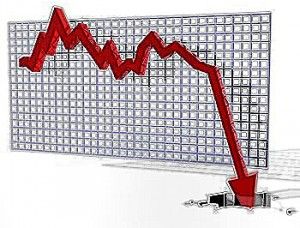Liberal downfall of San Diego falsely blamed on conservatives
by CalWatchdog Staff | June 4, 2012 10:53 am
June 3, 2012
By Wayne Lusvardi
 [1]What passes for academic public policy analysis in California has deteriorated to the level of a bunch of children pointing fingers at everyone but themselves when it comes to answering the question, “Who broke the piggy bank trying to shake all the coins out of it?” Answer: “The dog did it!” Only in the case of the book reviewed below, it is more like a man-bites-dog story that gets everything backwards.
[1]What passes for academic public policy analysis in California has deteriorated to the level of a bunch of children pointing fingers at everyone but themselves when it comes to answering the question, “Who broke the piggy bank trying to shake all the coins out of it?” Answer: “The dog did it!” Only in the case of the book reviewed below, it is more like a man-bites-dog story that gets everything backwards.
“Paradise Plundered: Fiscal Crisis and Governance Failures in San Diego[2]” (Stanford University Press, 2011, $24.95) is by professors Stephen P. Erie and Vladimir Kogan of the University of California, San Diego and Scott A. MacKenzie of of the University of California, Davis. The writing of the book was funded by the Academic Senate of the University of California[3].
The unstated backdrop to the book is that the U.C. system has been besieged by budget cuts due to the chronic state budget deficit. Apparently, the authors found a scapegoat: conservatives in San Diego — nicknamed “American’s Finest City” and California’s most Republican large city. If you don’t want to find the real culprits, then “kick the dog.”
There is enough blame to go around on both Republicans and Democrats for the budget messes in San Diego and at the state level. But it is not logical to blame San Diego’s financial woes solely on conservative budgetary policies or Proposition 13.
“Paradise Plundered” is the story of how the near financial insolvency of the city of San Diego came about, due to purported “plundering” by conservative policy that “underfunded public services and infrastructure.” Inaccurately calling the underfunding of public services “plundering” is an oxymoron[4] — a combining of contradictory or opposite meaning words as a cliché for emotional effect. As with all clichés[5], it is used to divert attention elsewhere and stifle any useful discussion.
“Paradise Plundered” is chock full of clichés. The authors keep trying to find a cliché or metaphor that will stick in describing San Diego’s financial problems: “paradise plundered,” “Ponzi scheme[6],” “Potemkin village planning,” “Armageddon,” “futureville,” “paradise ungoverned,” “shadow government,” “a mad juggler’s circus,” “the Land of Oz,” “Enron by the Sea,” etc. But using a series of clichés makes the book nearly incoherent, with only a superficial understanding about municipal financial stress. One must get beyond the overworked clichés and ideological warfare in the book to get an understanding of municipal financial stress in San Diego or the rest of California.
The Crash of 2008 and municipal decline
 [7]After the Mortgage Meltdown and Bank Panic of 2008, Californians awoke to find their state and cities suffering from excessive extravagance, debt and corruption. The Golden State had become a dysfunctional form of government. California’s political class had run up enormous budget deficits and pension debts that would cripple the entire United States if the state were given a bailout. But neither California’s nor San Diego’s financial problems could be simply solved.
[7]After the Mortgage Meltdown and Bank Panic of 2008, Californians awoke to find their state and cities suffering from excessive extravagance, debt and corruption. The Golden State had become a dysfunctional form of government. California’s political class had run up enormous budget deficits and pension debts that would cripple the entire United States if the state were given a bailout. But neither California’s nor San Diego’s financial problems could be simply solved.
Thus, there was a search for theories of municipal decline. Some of these theories are ideological. Ideology has to do with ideas of groups competing for scarce resources. Liberals denounce conservatives as underfunding public services, mainly due to Proposition 13[8]; conservatives denounce liberals as wild-spending socialists with fat-cat pensions promised to unions. Facts can be selectively found to support both ideologies, though there is substantial proof and documentation that government employee unions went wild plundering[9] public treasuries during the Housing Bubble.
But at bottom, California’s financial crisis was demographic[10]: too few intact, self-sufficient families to take out mortgages and small business loans to provide a sufficient interest rate on the savings for the elderly and pension funds for public retirees. This is essentially the same demographic force that is melting down the economies of Greece, Spain and the European Union. But this doesn’t fit the under-taxed theory of municipal decline in “Paradise Plundered.”
Both the national and state policy solution to this demographic problem was to give single-parent and low-income families cheap housing so there would be enough economic base to fund public pensions, Social Security, Medicare, and local public services and infrastructure.
This false housing economy was hardly the “underfunding of public services” that authors Erie, Kogan and MacKenzie claim was the basis of the municipal decline of San Diego. Housing is never a driver of a genuine economy[11], but an asset that reflects the productivity of the commercial economy. And the Housing Bubble resulted in a corresponding bubble in municipal budgets to spend on infrastructure and public services.
Infrastructure funding squandered, not underfunded
Contrary to the thesis in “Paradise Plundered,”, it wasn’t that too little infrastructure was funded. For example, from 2000 to 2006 California issued five water bonds totaling $18.7 billion[12] (Propositions 12, 13, 40, 50 and 84). However, the bond funding was squandered mostly on open space acquisitions and greenscaping around wealthy residential enclaves and environmental studies, without any substantial new water being produced. California ended up in 2012 with only a half-year of water storage capacity[13] in both state and federal reservoirs to withstand drought. It wasn’t a lack of funding that created California’s permanent man-made drought. A new water storage reservoir and a new water conveyance system around or through the Sacramento Delta arguably could have been built with that amount of funding.
Why San Diego’s water rates are overpriced
 [14]San Diego has few local water supplies. In the 1930’s, President Franklin D. Roosevelt denied San Diego’s request for the use of federal land to build its own aqueduct from the Colorado River. Thus, San Diego has been waging a water war with the Metropolitan Water District of Southern California over high-priced water rates since the 1940’s.
[14]San Diego has few local water supplies. In the 1930’s, President Franklin D. Roosevelt denied San Diego’s request for the use of federal land to build its own aqueduct from the Colorado River. Thus, San Diego has been waging a water war with the Metropolitan Water District of Southern California over high-priced water rates since the 1940’s.
The route of the Colorado River Aqueduct was originally designed to expensively pump water over the Mojave Desert mountain ranges, instead of a route that conveyed water cheaply by gravity flow. The huge electrified pumping stations to get water over the mountains relied on hydropower from the Hoover Dam. The intent of picking the most costly route was to compel Southern California water ratepayers to pay for the immense cost of building the dam. San Diego has for decades had to pick up the largest share of the cost of paying for Hoover Dam, instead of building its own cheaper water conveyance system.
Taking an alternate cheaper route, private farmers brought Colorado River water by gravity flow through the All-American and Coachella canals to nearly the same place that the San Diego Pipelines Nos. 1 to 6 water to San Diego County. If markets are the cheapest way to produce any good, then government is the costliest way.
But Erie asserts the opposite — that Los Angeles has been subsidizing San Diego’s water rates for decades. What Erie fails to report is that San Diego has had to pay a higher price for water than it needed to. San Diego’s share of the cost of the regional Colorado River Aqueduct was not “underfunded,”, but a lost opportunity cost to build its own cheaper system.
Ag to urban water transfer not “underfunded”
Oddly, Erie singles out San Diego’s recent transfer of agricultural water from Imperial County not as an “underfunded” infrastructure project but as an overly “expensive proposition.”
Erie fails to mention that the only new major source of water for urban California in the past few decades has been San Diego’s recent transfer of excess agricultural water from Imperial County[15]. This is the largest agriculture-to-urban water transfer in U.S. history. And it originated in the lining of agricultural irrigation canals by the San Diego County Water Authority. This resulted in bringing enough previously wasted farm water to serve 1.2 million people in the San Diego area. It freed an equal amount of water in the rest of Southern California for other cities. And it used existing water canal and pipeline infrastructure to do it. Erie has been an outspoken opponent of San Diego conserving wasted agricultural water[16] for use by San Diego.
Underfunded public services thesis refuted
What the authors contend is that San Diego is an “ungoverned metropolis” that is “America’s cheapest city” and the “victim historically of a libertarian political culture.” According to the authors, this has caused the underfunding of sewers, libraries, public pension programs, affordable housing and wildfire protection in semi-rural areas.
But their book is not social science. It does not advance a hypothesis that they try to reject or affirm, nor do they attempt a comparative analysis. Anyone can connect impressionistic dots like in a Michael Moore fake documentary[17] and convince you.
The authors don’t explain why cities with heavily socialized political cultures and liberal budgetary spending — such as Los Angeles, San Francisco or Stockton — find themselves in nearly the same boat as San Diego. Neither do they explain why liberal suburban cities with top bond ratings — such as Santa Monica, Palo Alto or Pasadena — don’t have the same magnitude of budget problems as San Diego. Nor do the authors discuss why the most libertarian city in California — the city of Laguna Niguel in Orange County that contracts out nearly all its municipal services — has none of the financial problems of San Diego or other cities in California.
Contrary to all the blurbs by reviewers on the book jacket and at Amazon.com, “Paradise Plundered” is a pretend book of social science and public policy analysis. It is a polemic — a one-sided attack on straw-man anti-government groups, libertarian ideology and Republican-run municipal regimes. As such, I found the book a huge disappointment and not worthy of publication by the prestigious Stanford University Press.
As someone who has worked in a social service agency and the courts, a redevelopment agency, a public housing agency and a large regional water district in California, and who completed a graduate program in municipal budgeting and finance, I would not recommend this book to city managers or policy analysts to grasp an understanding of California’s municipal financing problems. This book is mainly for ideological warfare. If you want to hear that fiscally conservative and libertarian public policies are at the heart of California and San Diego’s municipal financing problems, this is your book. Otherwise, look elsewhere.
Redevelopment as a policy parable
The one part of the book I concurred with the authors was on the binge spending of San Diego on redevelopment projects for sports stadiums and its Old Town District. Redevelopment agencies were “plundering” $5 billion per year statewide in property taxes from local public schools, mainly for building shopping malls and luxury affordable housing projects.
In 1900, Mark Twain wrote the following description of progressive public policy: “Every time you stop a school, you will have to build a jail. What you gain at one end you lose at the other. It’s like feeding a dog on his own tail. It won’t fatten the dog.” This sums up the “underfed” public services and infrastructure thesis of “Paradise Plundered.”
By 2012, California had reversed Mark Twain’s parable of progressive policy so that every time you build a mall or a sports stadium you rob a local school district of property taxes. Every time you issue a “waterless” water bond, you get more man-made drought. Every time you block an agricultural water transfer, you end up with overfunded, not underfunded, infrastructure costs. Every time you build so-called affordable luxury quality housing, you demolish truly affordable older housing stock and inflate the price of new housing that can’t be recouped when the market falls. Every time you use redevelopment to build a new luxury mall, you overprice goods and services beyond what most people can afford anymore resulting in more online buying and not eating out.
As Twain would say, “What you gain at one end you lose at the other.” California has invented a regressive policy of thinking it can fatten up the dog of big government by eating its own tail.
- [Image]: http://www.calwatchdog.com/2012/06/04/liberal-downfall-of-san-diego-falsely-blamed-on-conservatives/paradise-plundered-san-diego/
- Paradise Plundered: Fiscal Crisis and Governance Failures in San Diego: http://www.amazon.com/Paradise-Plundered-Fiscal-Governance-Failures/dp/0804756031
- Academic Senate of the University of California: http://senate.ucsd.edu/cor/calls/gcresearch.htm
- oxymoron: http://www.thefreedictionary.com/oxymoron
- clichés: http://www.amazon.com/The-Tyranny-Cliches-Liberals-Cheat/dp/1595230866
- Ponzi scheme: http://en.wikipedia.org/wiki/Ponzi_scheme
- [Image]: http://www.calwatchdog.com/2011/11/07/municipal-bond-credit-is-imploding/market-crash/
- Proposition 13: http://en.wikipedia.org/wiki/California_Proposition_13_(1978)
- plundering: http://www.amazon.com/Plunder-Employee-Treasuries-Controlling-Bankrupting/dp/0984275207
- demographic: http://www.calwatchdog.com/2011/02/09/fewer-families-dictates-states-destiny/
- Housing is never a driver of a genuine economy: http://www.realclearmarkets.com/articles/2012/05/11/the_1930s_and_the_2000s_government_barriers_to_growth_99665.html
- five water bonds totaling $18.7 billion: http://www.calwatchdog.com/2010/12/27/new-year%E2%80%99s-water-bond-resolutions/
- half-year of water storage capacity: http://www.calwatchdog.com/2012/04/09/cadiz-creates-water-out-of-thin-air/
- [Image]: http://www.calwatchdog.com/2012/04/27/feinstein-offers-pact-with-water-devil/water-devil/
- San Diego’s recent transfer of excess agricultural water from Imperial County: http://www.calwatchdog.com/2012/05/07/san-diego-wheels-deals-and-sues-for-water/
- outspoken opponent of San Diego conserving wasted agricultural water: http://www.aguanomics.com/2010/07/beyond-chinatown-guest-review.html
- Michael Moore fake documentary: http://www.spring.org.uk/2007/11/9-propaganda-techniques-in-michael.php
Source URL: https://calwatchdog.com/2012/06/04/liberal-downfall-of-san-diego-falsely-blamed-on-conservatives/